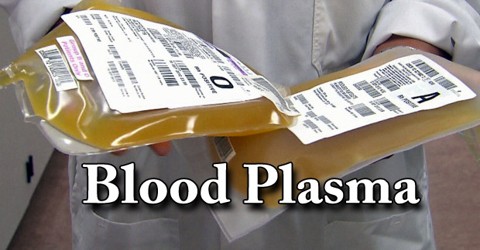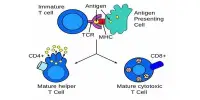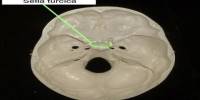Blood Plasma
Definition
Blood Plasma is the pale yellow fluid portion of whole blood that consists of water and its dissolved constituents including proteins, as albumin, fibrinogen, and globulins, electrolytes as sodium and chloride, sugars as glucose, lipids as cholesterol and triglycerides, metabolic waste products as urea, amino acids, hormones, and vitamins. It makes up about 55% of the body’s total blood volume. It is the intravascular fluid parts of extracellular fluid all body fluid outside of cells. It is mostly water (up to 95% by volume), and contains dissolved proteins (6–8%), glucose, clotting factors, electrolytes (Na+, Ca2+, Mg2+, HCO3−, Cl−, etc.), hormones, carbon dioxide, plasma being the main medium for excretory product transportation and oxygen.

Blood Plasma is prepared by spinning a tube of fresh blood containing an anticoagulant in a centrifuge until the blood cells fall to the bottom of the tube. The blood plasma is then poured or drawn off. Blood plasma has a density of approximately 1025 kg/m3, or 1.025 g/ml. The use of blood plasma as a substitute for whole blood and for transfusion purposes was proposed in March 1918, in the correspondence columns of the British Medical Journal, by Gordon R. Ward. “Dried plasmas” in powder or strips of material format were developed and first used in World War II.
Blood is a substance that elicits a wide variety of reactions from people. Some individuals study it, while others need only a glimpse of it to get weak in the knees. However, despite the various opinions on blood, one thing is clear: we would not exist without it.
Blood serves three main purposes in our bodies. First, it is a transport system. Blood delivers oxygen and nutrients, transports hormones and enzymes, and delivers waste products to be excreted. Second, blood helps regulate our pH, as well as our temperature. Finally, products in our blood protect us against disease and also provide clotting agents to stop bleeding.

Plasma Donation
Plasma is the often forgotten component of blood. White blood cells, red blood cells, and platelets are essential to body function, but plasma also plays a crucial, and mostly unrecognized, job. It carries these blood components throughout the body as the fluid in which they travel. Plasma as a blood product prepared from blood donations is used in blood transfusions, typically as fresh frozen plasma (FFP) or plasma Frozen Within 24 Hours After Phlebotomy (PF24). When donating whole blood or packed red blood cell (PRBC) transfusions, O- is the most desirable and is considered a “universal donor,” since it has neither A nor B antigens and can be safely transfused to most recipients. Type AB+ is the “universal recipient” type for PRBC donations. Plasma is frozen quickly after donation (up to 24 hours) to preserve clotting factors, stored up to one year, and thawed shortly before use. It is commonly transfused to trauma patients and patients with severe liver disease or multiple clotting factor deficiencies.
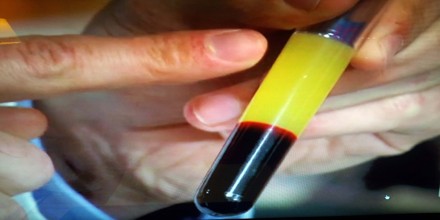
Components of Plasma
Plasma components can be used in a number of different ways, depending on the condition they’re being used to treat. The two main methods of using plasma are:
- Fresh Frozen Plasma Transfusion – where plasma is separated from donated blood and frozen until needed; it’s then thawed under controlled conditions and transfused to the recipient
- Plasma Exchange – where a special machine is used to remove plasma from the patient’s blood; it’s then replaced with a substitute plasma component from donors
- Clotting Factors – Clotting (coagulation) substances called clotting factors help control bleeding and work together with platelets to ensure the blood clots effectively. Fresh frozen plasma and clotting factors can be used to treat bleeding disorders. For example, they can be used in severe injuries when there’s a lot of bleeding.
- Albumin – Albumin cleans the blood, carries substances around the body, and helps maintain the correct amount of fluid circulating in the body. Human albumin solution can be used as a treatment to help people with severe burns, sepsis, liver disease or kidney disease.
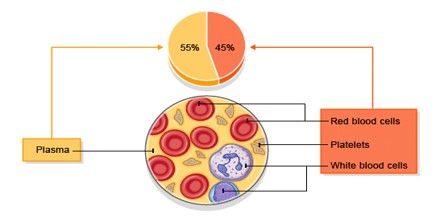
Functions of Blood Plasma
Plasma is the liquid portion of the blood. It is responsible for many different functions in the body.
- Transport Nutrients – One of the most important functions of the plasma is to transport nutrients throughout the body. As food is digested in the stomach and intestines, it is broken down into its components. This includes amino acids (the building blocks of proteins), lipids (fats), sugars (glucose) and fatty acids.
- Transport Waste – In addition to transporting nutrients, the plasma transports waste products, such as uric acid, creatinine and ammonium salts, from the cells of the body to the kidneys. The kidneys filter these wastes out of the plasma and excrete them from the body as urine.
- Maintains Blood Volume – Approximately 7 percent of the plasma is protein, according to the Science Encyclopedia. The protein found in the highest concentration in plasma is albumin, a protein important for tissue repair and growth.
- Balance Electrolytes – Plasma carries salts, also called electrolytes, throughout the body. These salts, including sodium, calcium, potassium, magnesium, chloride and bicarbonat,e are important for many bodily functions. Without these salts, muscles would not contract and nerves would not be able to send signals to and from the brain.
- Defend the Body – Plasma carries other proteins besides albumin throughout the body. Immunoglobulins, also known as antibodies, are proteins that fight off foreign substances, such as bacteria, that invade the body. Fibrinogen is a protein necessary to help the platelets to form blood clots. By carrying these proteins, the plasma is playing a critical role in defending the body against infection and blood loss.
